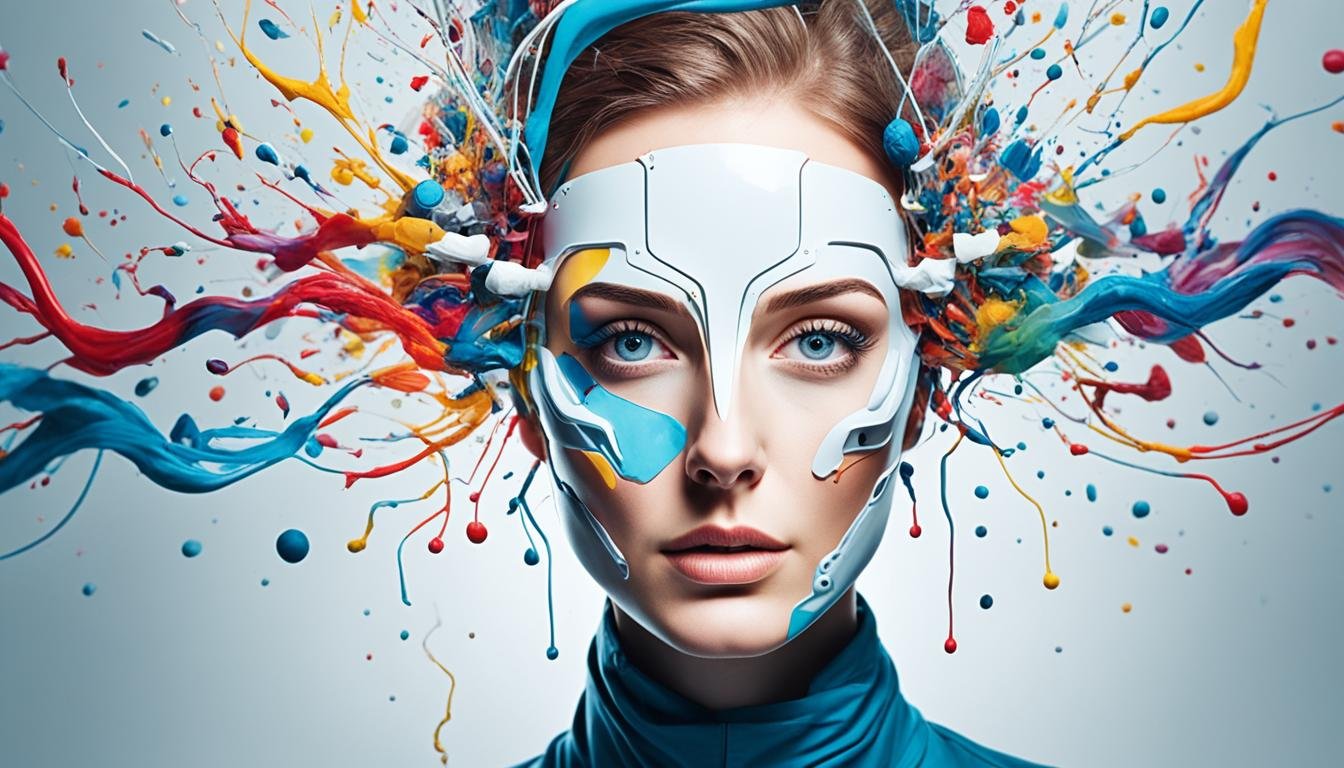The rise of AI-generated art has brought both excitement and controversy. It makes art more accessible and versatile. Yet, it also faces serious issues that make artists and art lovers doubt its value. These problems include a lack of emotional depth and copyright battles.
Recent studies show that over 80% of artists are unhappy with AI art’s impact on their work. This shows the growing concern in the art world about this new technology.
Key Takeaways
- AI art lacks the ability to express genuine emotions and unique human experiences.
- There is a risk of undervaluing or overshadowing human creativity through AI-generated works.
- The rise of AI in art poses potential threats to artistic professions, with the possibility of job displacement.
- Ethical concerns arise around ownership and intellectual property rights in AI-generated artwork.
- AI’s lack of true consciousness hinders it from fully capturing human emotions and experiences.
The debate over AI art is getting louder. It’s clear we can’t ignore its downsides. Next, we’ll look into the controversies, ethical issues, and creative challenges AI art brings.
The Controversy Surrounding AI Art
AI art has sparked a big debate in the creative world. It can copy famous artists so well, it raises questions about copyright and who owns AI-made art. Figuring out who made these digital artworks is hard, causing big ethical problems for artists and groups.
The Ethical Dilemma of AI Art
AI art brings up big questions about society. It talks about standardizing art, replacing jobs, and privacy issues. With more AI art out there, people worry it might flood the market with too much art. This could make it hard for real artists to get noticed and might lower the value of art.
Navigating the Murky Waters of Artistic Expression
Using AI in art makes us question what art really is. Some wonder if AI can make art that touches people’s hearts. They think AI might not understand human feelings well enough to make art that truly connects with us.
AI art is causing a big stir, with places like Getty Images and Nature journal taking steps to deal with legal and ethical issues. As we figure out how to handle AI art, everyone is trying to find their way in this new world of art.
| Impact of AI on Creative Industries | Percentage of Disruption |
|---|---|
| Animation Studios | 25% |
| Music Composition | 30% |
| Architecture | 20% |
| Visual Art | 40% |
“The sale of the AI-created ‘Portrait of Edmond Belamy’ at a Christie’s auction in October 2018 for $432,500 sparked a debate about the role of artificial intelligence in the art world and raised questions about authorship and creativity.”
Lack of Emotional Depth and Creativity
AI-generated art can look amazing but often misses the emotional depth found in human art. It uses algorithms and old data, which might make its art less unique. Humans bring creativity, make quick decisions, and understand emotions in a way AI doesn’t.
Some worry that AI art might become too similar, losing its diversity and originality. It could also make people value art less, since AI can do certain things without the hard work and personal touch of humans. This could make people see art differently, valuing it less.
There’s also fear that AI art might not connect with us on a deep level. It might not have the same human feelings and experiences as traditional art. This could make us feel less moved by art and make it seem less special.
AI can help make art more creative and offer new ideas. But, it still struggles with lack of emotional depth in ai art and lack of creativity in ai art. Working together, AI and human artists might find a way to keep art’s true spirit alive.
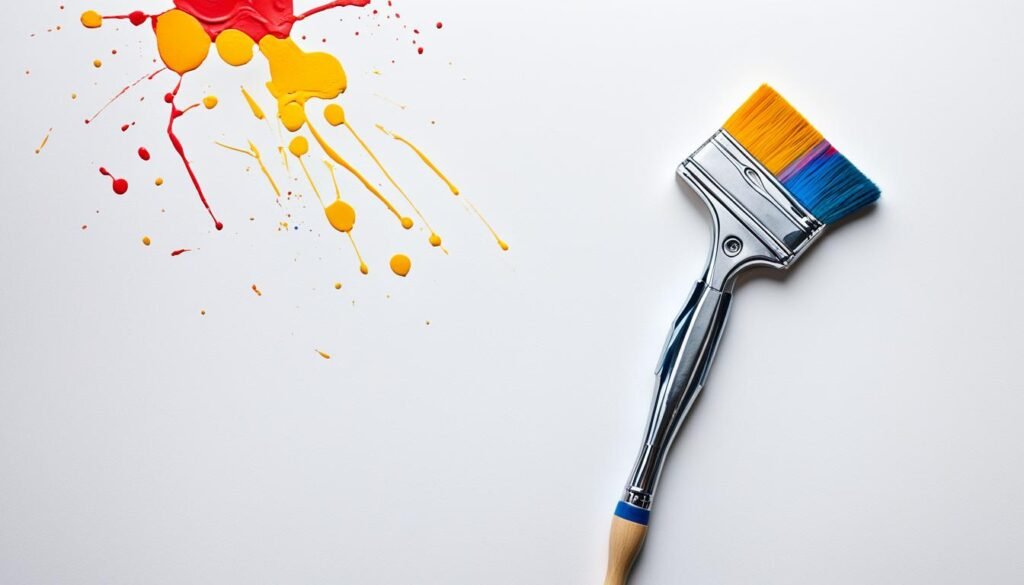
“The ability to make intuitive decisions, understand human emotions, and create unique and meaningful artwork is seen as a distinctive trait of human artists.”
Copyright Battles and Ownership Disputes
The rise of ai art copyright issues has created a complex legal landscape. AI art generators now mimic famous artists, both alive and dead. This has led to replicating artistic styles legal issues that artists and copyright owners face.
Jason Allen’s AI artwork won a prize at the Colorado State Fair. But, the US Copyright Office said it couldn’t be copyrighted because it wasn’t made by a human. This ruling worries about how AI will change the arts, possibly forcing artists to add more human touch to keep their work protected.
Replicating Artistic Styles: A Legal Minefield
AI art generators can copy famous artists’ styles, causing ownership disputes in ai art. As AI gets better, it’s hard to say who owns the art. This makes it tough to figure out who should get credit and rights.
- The US Copyright Office won’t register a work if a human didn’t make it. This includes works made by machines without any human creativity.
- A US judge threw out a case where an AI researcher tried to claim copyright for his AI system. This decision confirms who owns AI art.
- It’s still unclear what counts as human input in AI-assisted art. For example, Jason Allen’s award-winning piece was rejected for copyright because it had too much human help.
Determining the Rightful Owner: A Labyrinthine Endeavor
AI art generators learn from what users give them, making it hard to know who owns the art. This has led to ownership disputes in ai art. Experts and lawmakers are trying to find a fair way to solve these issues.
| Statistic | Value |
|---|---|
| The US Copyright Office’s ruling that an AI-created artwork is not eligible for copyright | This decision worries about how AI will change the arts. Artists might need to add more human touch to keep their work safe. |
| The case where an AI researcher attempted to prove that his AI system deserved copyright protection | A US judge said no, making it clear who owns AI art. |
| The specific threshold for human authorship in AI-assisted art | It’s still not clear, as seen with Jason Allen’s piece. It was rejected for copyright because it had too much human input. |
As ai art copyright issues change, artists, copyright holders, and lawmakers must work together. They aim for a fair and just future for the arts.
The Authenticity Conundrum
The debate about AI art’s authenticity is growing. As AI art becomes more common, people wonder about its true value. They question if AI art can truly be creative like humans.
AI Art’s Reliance on Algorithms and Datasets
AI art is different from traditional art because it uses algorithms and datasets. These tools help AI models learn from lots of images. But, this process might make the art less unique and less original.
Using algorithms to make art makes us think about human creativity. AI can make beautiful images, but they might not have a personal touch. This can make viewers feel like they’re missing something.
“Contrary to arguments equating machine learning to human learning, generative AI lacks consciousness or understanding, resulting in boring output and the inability to create inspiring or groundbreaking stories.”
People are still discussing if AI art is truly authentic. Artists, curators, and the public need to talk about AI art’s role in art. This will help us understand its place in the art world.
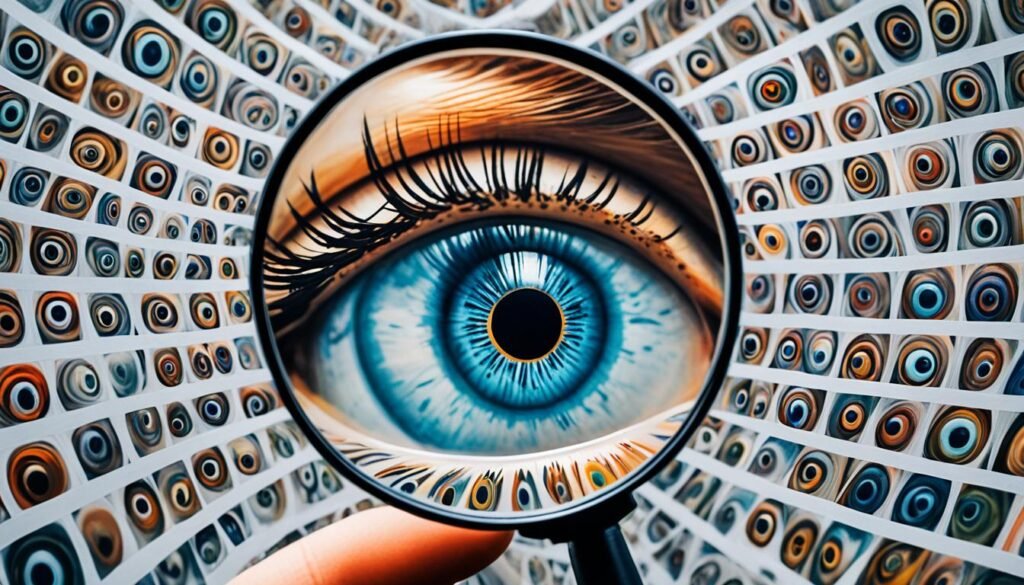
AI art’s use of algorithms and datasets is key to its nature. This fact makes us wonder about its uniqueness. As AI technology gets better, the art world must think about AI’s role in art. We need to keep the human touch in creative work.
Loss of Creative Control and Human Input
The rise of AI art has started a big debate about creativity and who should be called an artist. Many artists worry that AI is taking over their creative work. They feel their role is getting smaller and less important.
One big worry is that AI art might not have the same emotional depth as art made by humans. AI art often lacks the deep feelings and unique views that make art special. It uses algorithms and old data, making art that’s good but lacks the real emotional touch of great art.
Also, AI can copy famous artists’ styles, leading to copyright issues. This has made questions about who owns the art and what’s real very complicated. Artists are worried that AI could steal their style and reputation.
The debate about AI art’s impact on creativity is ongoing. As AI gets better, we need to talk more about its effects. Artists, lawmakers, and everyone should think about the future of art and creativity with AI.
“The creative process is not a mechanical one. It’s not something that can be reduced to a set of rules or algorithms. It’s a deeply personal and intuitive experience that is inherently human.”
why ai art is bad
AI art has changed the way human artists make a living. Now, artists struggle to earn from their work because AI offers cheap or free art. This has made many artists worry about their future and the value of their work.
A recent study found that AI art is getting more popular. Tech companies are making tools that can create art cheaper than hiring a human. This has made artists fear that machines will replace them.
Clarke Hamilton, a sophomore in studio arts, believes AI won’t fully replace human artists because it’s not as good. But Kylie Clifton, an enterprise reporter, thinks AI is a big threat. She says it’s made by algorithms, not artistry.
Eva Toorenent, a freelance artist, worries about AI making art that looks like hers. She’s concerned about who owns the rights and how artists get paid fairly. Zack Cunningham, a sophomore in animation, fears AI will hurt the future of human artists in the art world.
Jeffrey Katzenberg, co-founder of DreamWorks, thinks AI could cut animation costs by 90%. This might mean fewer jobs for real animators. Annabelle Shania Gunawan, a film and media studies major, agrees. She sees AI as a big threat to artists’ jobs.
Artists are finding it hard to make a living from their work. They often get paid too little. There’s a push for ethical use of AI art. People are asked to support artists by valuing their work and paying them fairly.
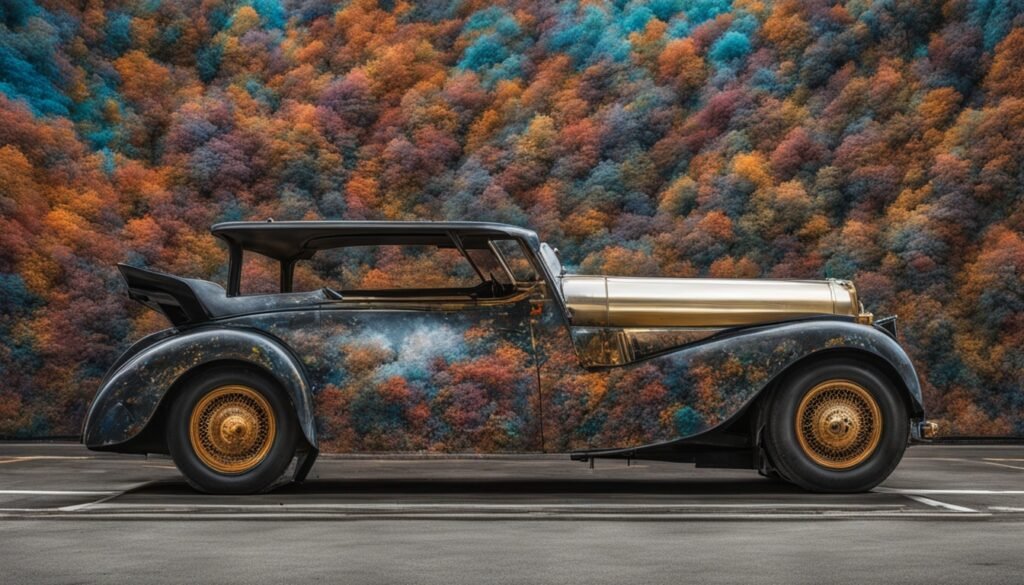
“AI art is an unstoppable force that artists cannot effectively combat,” says Zack Cunningham, a sophomore animation major.
This section highlights the challenges artists face. It calls for a deeper look at how AI art affects their lives and the value of their work. As the art world changes, finding ways to protect human creativity is key.
The Creative Process: Prompting vs. Artistic Practice
Creating art with AI is very different from what human artists do. AI can make art with just a simple prompt. But, human artists put in a lot of time and effort to improve their skills and make art that shows their vision. This undervaluing of their hard work is a big worry for those who value human art.
Time and Effort: The Value of Hard Work
Tools like DALL-E and Midjourney make art by recognizing patterns in their training data. This creative process in AI art is quite different from the hard work human artists put in. While AI can make art easily, human artists spend many hours improving their skills and perfecting their style.
The time and effort human artists put in makes their art real and full of emotion. AI art may look good, but it often misses the personal touch and spark that comes from an artist’s own life and art. This worry about the devaluation of the human element in art is growing as AI changes the art world.
| Creative Process in AI Art | Time and Effort in Human Art |
|---|---|
| Prompting-based art generation | Honing skills, developing unique styles, perfecting creative vision |
| Pattern recognition in training data | Arduous journey of artistic practice and experimentation |
| Visually impressive but lacking emotional depth | Authenticity and personal touch derived from artist’s experiences |
As AI changes the art world, we must value the value of hard work and dedication human artists bring. We need to find a balance between AI’s benefits and keeping the human creative spirit alive. This means recognizing the true value of artistic labor.
Unique Artistic Styles and Their Diminishing Value
Before, artists could spend years perfecting their unique styles. This made their work highly valuable. But, AI art generators have changed this. They can copy many artistic styles, making these styles less special.
AI art creation is now fast and easy to access. This makes it hard for human artists to stand out. With more AI art around, the market might get too full of similar work. This could make it tough for artists to get high prices for their work.
This change is a big challenge for artists who have worked hard on their craft. The value of unique styles is going down with AI art. This might make some artists stop working on their unique styles. It could lead to less variety in art.
“The ability of AI art generators to replicate and imitate various artistic styles has diminished the value and uniqueness of these individual styles, potentially discouraging artists from investing the time and effort required to develop their own distinctive approaches.”
Artists need to find new ways to make their work stand out. They might use new techniques, work with AI, or try new business models. This will help them survive in a changing art world.
The rise of AI art is a big change for the art world. Artists, collectors, and the creative community must figure out how to keep human art valuable. They need to find ways to stand out against AI-generated art.
The Ethical Dilemma of Data Collection and Consent
The rise of AI art has raised big ethical questions. Many AI art generators use data without asking the original artists first. This has sparked a big debate about AI art.
Scraping Data Without Artists’ Permission
AI art generators collect huge amounts of data, like billions of images. They get this data by automatically taking it from online places, like social media and art sites. But, the artists who made these works feel their work is being used without their okay.
This issue of taking data without asking raises big ethical questions. Artists should have control over how their work is used. Using their work without permission for AI training is a big violation of their rights. It also worries about privacy, as personal and copyrighted stuff can be taken without people knowing or saying yes.
As AI art gets bigger, we need to deal with these ethical issues fast. It’s important for AI makers, artists, and law-makers to work together. They need to make rules that protect artists’ rights but also let AI art grow responsibly.
“The unauthorized use of [artists’] creations for AI training can be seen as a violation of their creative rights.”
The issue of data collection and consent is a tough one. It shows we need more openness, responsibility, and respect for artists in AI art. By tackling these problems, the industry can aim for innovation that respects ethical and responsible data use.
Potential Collaborations: Bridging AI and Human Creativity
AI art has raised some concerns, but there’s a big chance for AI and human artists to work together. By using AI’s strengths and valuing human creativity, we can mix these two worlds. This mix can open up new ways to express art.
Artists can use AI to get new ideas and start their creative process. AI can make unique patterns, change images, and create new compositions. Then, human artists can add their own touch to make it special. Musicians can also use AI to make music, which they can then make their own.
But, combining AI and human creativity has its challenges. Artists need to keep their work real, not rely too much on AI, and keep improving their skills. By knowing what they want to create and picking the right AI tools, artists can add AI to their work. This way, they can work together to make their vision come to life.
The chance for AI and human art to work together is big and exciting. By using the best of both, we can bring new ideas to art and creativity.
| AI Capabilities | Human Creativity |
|---|---|
|
|
By combining AI and human creativity, we can explore new possibilities in art and self-expression. The future looks bright with exciting collaborations and innovations ahead.
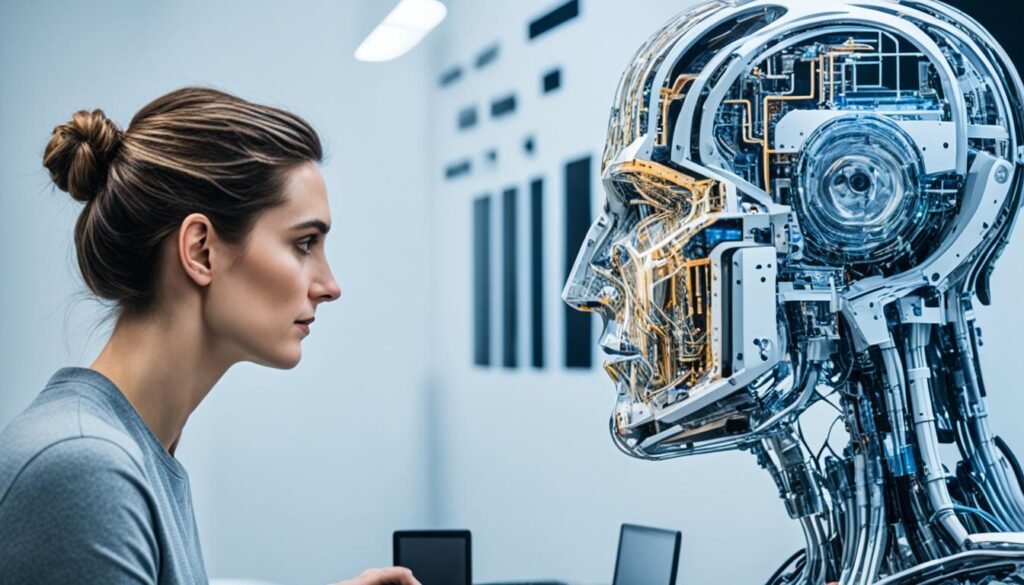
“The integration of AI and human creativity is not without its challenges, but the potential for collaboration is vast and promising.”
Conclusion
AI art has brought up many complex issues, like ethical concerns and copyright problems. It also makes people worry about losing creativity and realness. As AI gets better, we need to find a balance. We must look at how AI art can help while keeping the human touch that art has always had.
AI art faces big challenges, like affecting artists’ income and making human work less valuable. There’s also the issue of losing the realness of art and human control. But, by working together and understanding the value of human creativity, we can make a future where AI and human artists can both succeed.
The debate on AI art’s downsides and challenges is ongoing. It’s important to think about these issues and find solutions. We should value both human and AI artists’ contributions. By doing this, the art world can change in a way that respects human creativity. It can also use AI to make art better and more diverse.
FAQ
What are the key controversies surrounding AI art?
AI art has sparked debates over copyright, ownership, and authenticity. People worry about losing control over creative work.
How does AI art impact the emotional depth and creativity of artwork?
Some say AI art may not have the same emotional depth as human art. It uses algorithms and data that might reduce the artwork’s uniqueness.
What are the legal challenges posed by AI art in terms of copyright and ownership?
AI art’s ability to mimic styles leads to copyright issues. Figuring out who owns AI-generated content is hard because it learns from user data.
How does the authenticity of AI-generated art come into question?
AI art’s focus on technology and data might lessen its uniqueness. This raises questions about its value and significance.
What is the impact of AI art on the creative control and input of human artists?
AI art makes us question what creativity and authorship mean. Machines are now key in art, which might reduce human artists’ creative role.
How does AI art affect the livelihoods and income of human artists?
AI art’s low cost or free availability makes it hard for artists to make a living. They face tough competition from AI, undervaluing their work.
What is the difference between the creative process of AI art and human art?
AI art uses prompts, unlike human art which requires skill and effort. Human artists work hard to develop their unique styles.
How has the rise of AI art impacted the value and uniqueness of individual artistic styles?
AI can copy many styles, making them less valuable and unique. This might stop artists from creating their own styles.
What are the ethical concerns surrounding the data collection practices used in AI art generation?
Artists worry their work is used without permission. AI art often uses data without the original artists’ consent, raising ethical issues.
Is there potential for collaboration between AI and human artists?
Despite concerns, AI and human artists could work together. AI could help with creativity, offering new ideas and inspiring human artists.
